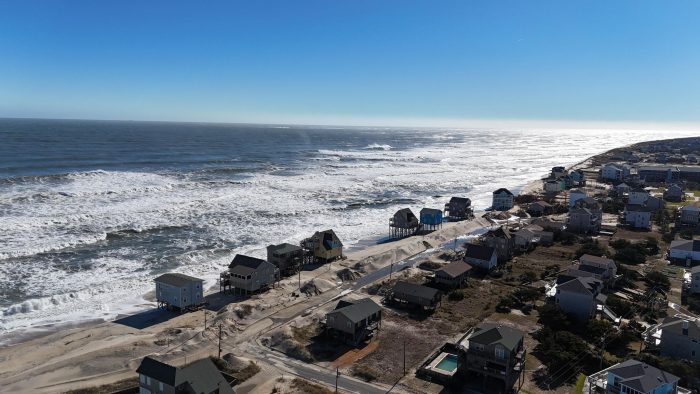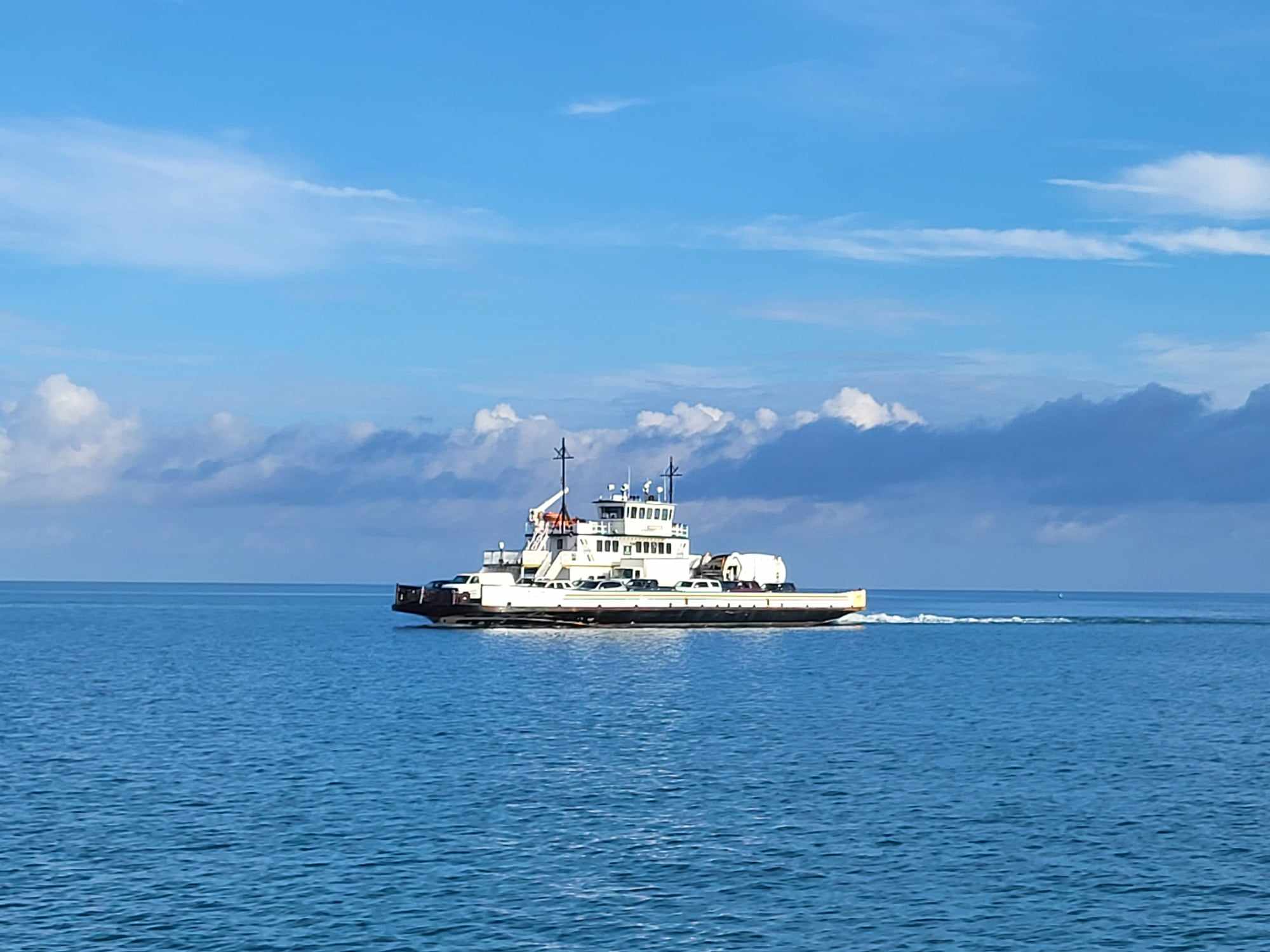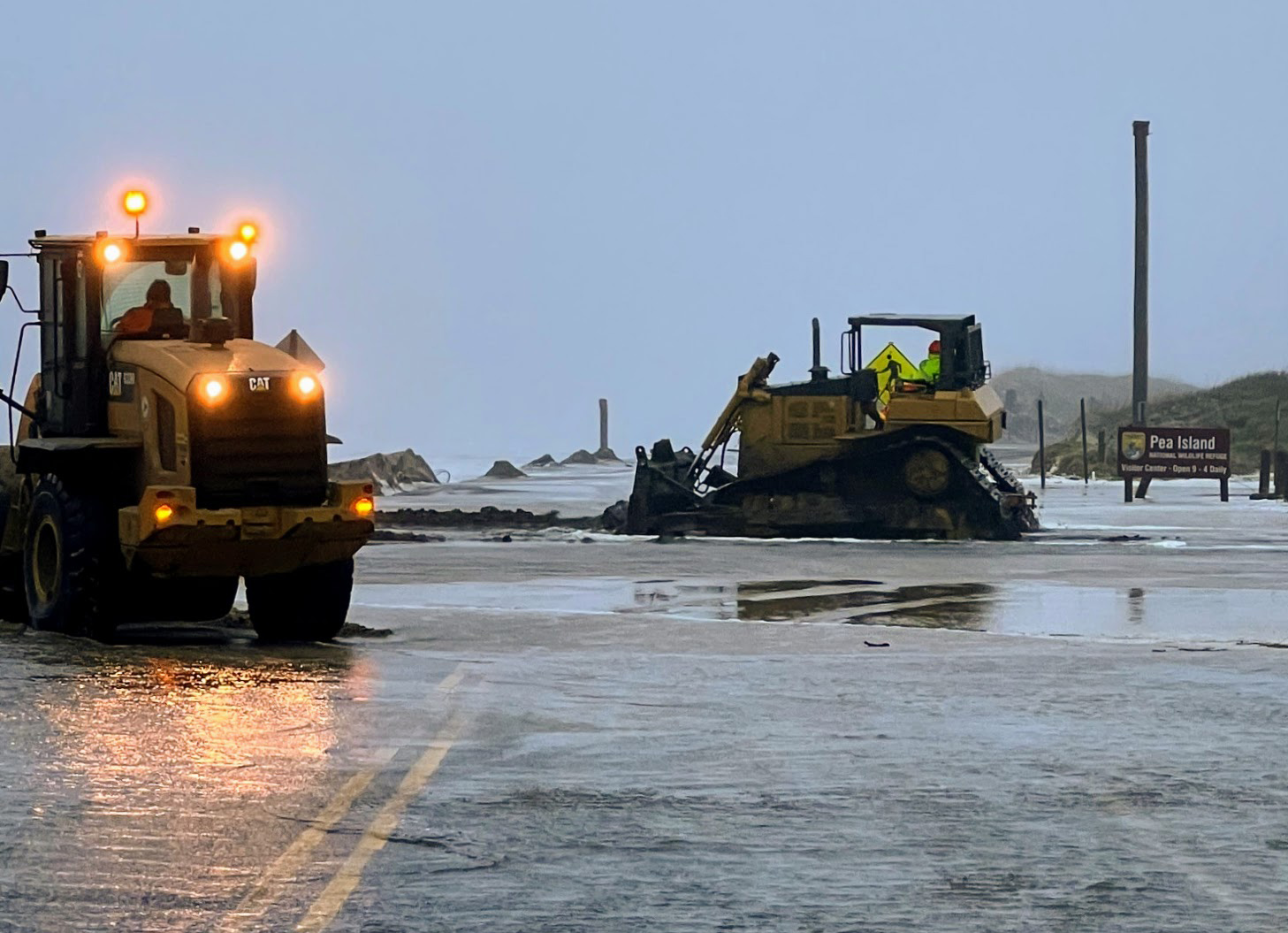Science panel applies 2022 sea level report projections to NC

The science panel that advises the state Coastal Resources Commission is showing with a new report how the findings of a 2022 federal-level report projecting that sea levels will rise by more than a foot by 2050 apply to North Carolina.
Released in mid-October, the “North Carolina 2024 Sea Level Rise Science Update” is the product of the science panel following the commission’s 2022 charge to present any new or significant data and research on sea level rise projections.
The commission was put in place in 1974 when the North Carolina General Assembly adopted the Coastal Area Management Act, or CAMA. The 13-member commission designates areas of environmental concern, adopts rules and policies for coastal development within those areas, and certifies local land use plans. The state Department of Environmental Quality’s Division of Coastal Management staff enforces the commission’s rules.
The U.S. Sea Level Rise and Coastal Flood Hazard Scenarios and Tools Interagency Task Force wrote “Global and Regional Sea Level Rise Scenarios for the United States,” that was published in February 2022 by the National Oceanic and Atmospheric Administration. Among the task force members are scientists from NOAA, NASA, the U.S. Geological Survey, Federal Emergency Management Agency, Army Corps of Engineers, Department of Defense and Environmental Protection Agency.
“In recent years, confidence regarding the expected amount of sea level rise by 2050 has increased,” the science panel recaps from the 2022 technical report in its October 2024 update. Regardless of how much warming occurs by 2100, trajectories evaluated by the 2022 sea level rise technical report indicate sea level rise of 1 foot to 1.4 feet by 2050, relative to sea level in 2000.
“The actual amount will depend on future greenhouse gas emissions, and how much ice is lost from the Greenland and Antarctic ice sheets,” the science panel continues in its update. “Projections for sea level rise beyond 2050 are less certain because they depend even more strongly on future greenhouse gas emissions and rate of ice loss from Greenland and Antarctica. However, rates of sea level rise are expected to further increase toward the latter half of this century.”
On the science panel, Dr. Reide Corbett is the dean and executive director of the Integrated Coastal Programs at the Coastal Studies Institute on the East Carolina University Outer Banks Campus.
He told Coastal Review that sea level rise projections continue to improve as new data becomes available and as the scientific community gains a better understanding of global processes changing sea level on different spatial and temporal scales.
The state’s science panel used the best available and most recent data to provide this 2024 Sea Level Rise Update, Corbett continued, adding that “It is critical that our communities are working with the most informed projections as they develop actionable plans for building more resilience across our coast.”

The strongest and most significant message Corbett said he sees coming from the 2024 update and other recent reports is that North Carolina must plan for at least a 1 foot rise in sea level by 2050. There is little deviation in this value whether projecting from tide gauges or using numerical models, Corbett added
“This is a reality that we need to start planning for today,” he said. “A 1 foot rise in sea level will significantly increase the number of days coastal North Carolina will experience high tide flooding. Communities need to start building these challenges into their land use plans, stormwater plans, and communicating the risks to residents.”
Division of Coastal Management Director Tancred Miller explained to Coastal Review that the science panel is defining sea level rise as an increase in the average height of the sea with respect to a specific reference.
Relative sea level is the combination of three primary factors: the global sea level, vertical land movement and oceanographic effects. These parameters are usually discussed in terms of their rates of temporal change, commonly expressed in millimeters per year, he said.
“Along the North Carolina coast, sea level is rising and the rate of rise varies depending on the location. There are two primary reasons for this variation along different parts of our coast: vertical land motion and the effects of ocean dynamics,” Miller continued.
He explained that this recent update emphasizes that tide gauge observations and modeling for all scenarios are nearly the same out to 2050, “indicating we are solidly on track for at least one foot of sea level rise by 2050.”
Miller noted that 2050 is just 25 years from now. “To prepare for this, requires community involvement, planning, mitigation, and adaptation to start now,” Miller said.
To help better plan for sea level rise, the Coastal Resources Commission charged its science panel in 2022 with providing periodic updates to support what it called “informed planning and decision making.”
The charge includes a request for the science panel to review every year any “new and significant scientific literature and studies that address the range of implications of sea level rise at the State, sub-regional, and local scales.” If there’s enough new information to warrant an update, the panel is to present these findings to the commission.
Miller said for the science panel to follow through with the directive, the team of scientists held a series of meetings earlier this year to share and discuss any recent data related to sea level rise.
“Given that the painstaking work of preparing sea level rise projections based on the latest science has already been carried out” by the task force, the science panel recaps the key messages detailed in the 2022 technical report.
The science panel also gives a brief summary of the regional sea level rise projections most relevant to North Carolina, and provides updated sea level rise projections and assessment of high-tide flooding frequencies for Duck, Beaufort and Wilmington, all based on data from the 2022 technical report.
The science panel sent out a draft of the sea level rise science update for comment this spring.
The document underwent a handful of changes based on public feedback, including the addition of a paragraph listing some of the key impacts of sea level rise, and adding the names of the different scenarios in the 2022 technical report — low, intermediate-low, intermediate, intermediate-high, and high — and referred to these throughout for clarity.
“The five sea level rise scenarios span the range of sea level rise that can be expected under the emissions and warming scenarios considered in the Intergovernmental Panel on Climate Change Sixth Assessment Report,” or IPCC, the science panel states in its update. The IPCC was created by the United Nations to assess climate change-related science.
“We also added text to explain how these scenarios relate to the emissions pathways and warming scenarios used in the Intergovernmental Panel on Climate Change report,” the new update continues. And provided more detail on the longer-term scenarios out to 2100.
The science panel did note in its update that, although summarizing the latest science on how these impacts will affect the state “is well beyond the scope of the Sea Level Rise Update Charge to the Science Panel, we refer interested parties to the coastal aspects of the 2020 Climate Risk Assessment and Resilience Plan, and associated or similar documents (and updates), for a more comprehensive discussion of sea level rise impacts, based on the latest science, to facilitate effective adaptation and mitigation planning.”
The first report the science panel, along with six additional contributors, issued was in March 2010 titled “North Carolina Sea Level Rise Assessment Report,” at the direction of the commission. The science panel recommended the report be reassessed every five years.
In April 2012 the panel issued a follow-up addendum to the report in response to questions from the commission.
That report was met with pushback from certain groups, resulting in a June 2012 law that put restrictions on how the sea level data was collated and used by state agencies and local governments.
The panel released an update in 2015 of the 2010 report.
“The next update was scheduled for 2020. However, due to the COVID pandemic, the 2020 update was postponed. In 2022, the CRC issued a revised charge to the science panel,” Miller said.
The division continues to accept public comments on the newly released update. Send comments to DCMcomments@deq.nc.gov. List “2024 Sea Level Rise Science Update” in the subject line. “Comments regarding the final report simply serve as an opportunity for citizens to provide thoughts on the finished work and will be provided to the panel for review,” Miller said.

















Everything is a guess and possibly a jaded guess or worse a WAG. You cannot count on a weather report to be accurate more than a few days. Even being generous 10 days. 25 year out is a complete fantasy. Could be better, could be worse or could be no change. The weather has varied the entirety of mankind and will continue to do so no matter what actions we take. Do I think it will rise over the next 25 years? Yes, but how much is completely unknown. The specifics and references to what man can do (or already did) are what turns away most people from the idea the earth is ever changing.